Thailand Wild Edible Fruit
Here are just a few of the many wild edible fruits we encounter
on our jungle survival tours in Phang
Nga Province. Many of the edible plants
and fruits are still used as traditional medicine in Thailand.
Some of the different parts of some fruit trees are very useful.
NOTE: we no longer offer
private survival courses. We only work with big school groups.
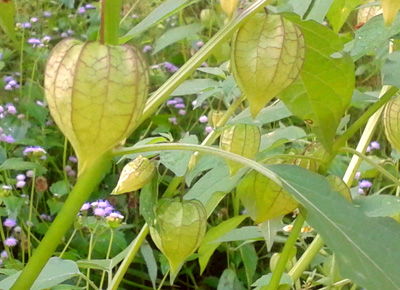 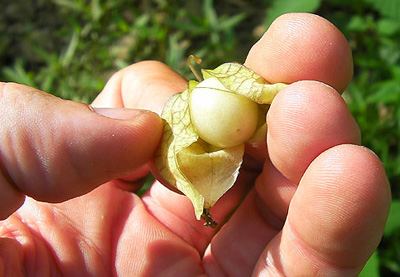
Bladder Cherry
The Bladder Cherry is in the Nightshade family
(Solanaceae - tomato, potato, chilli peppers, and
tobacco) and the genus Physalis, this small bush offers
a wonderfully tasty treat during the late dry season in
Thailand. Once ripe, they taste like a very sweet Cherry
Tomato.
In Chinese medicine it's used to treat sore throats,
coughs, and a fever.
|
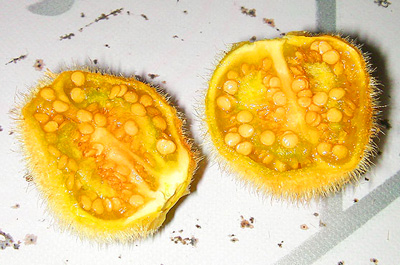
Ma Uk
This is a wonderfully sour jungle fruit.
It's not common, but we find it in Khao Sok in the
early spring months.
|
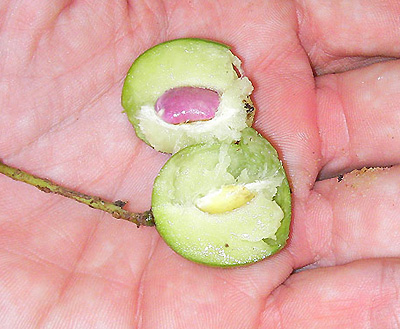 
Maprang
Maprang (also called Ma Yong in Thai) is really sour
when green, but very sweet when ripe (yellow). Maprang
(Bouea macrophylla) leaves are also edible. It is about
11% carbohydrate. The protein content is very low. It
has vitamin C and B Complex, potassium, phosphorous,
calcium, and a little bit of iron.
It is easy to find in Khao Sok in March and April. This
wild fruit is so tasty that it is sold commercially.
|
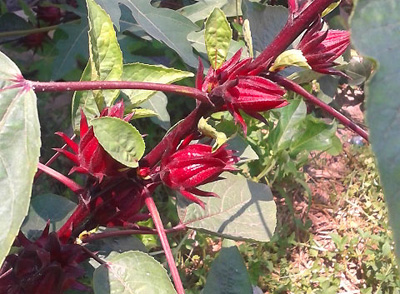
Red Sorrel
You can eat the leaves and the red hips of the Red
Sorrel or Roselle plant. Both are wonderfully sour and
refreshing. Both can be eaten raw or made into a drink.
This is in the Hibiscus family. All Hibiscus flowers are
edible. When you find some Red Sorrel you usually find a
lot of it as it spreads... so finding enough to get a
lot of nutrition out of it is actually quite easy.
Roselle is very nutritious. 60 grams has close to 7
grams of carbohydrate, over 7 mg of Vitamin C, 120 mg of
Calcium, 0.8 mg of Iron,, 38 mg of Magnesium,, 20 mg of
Phosphorus, 119 mg of Potassium, and trace amounts of
Vitamin B2 and Vitamin A.
|
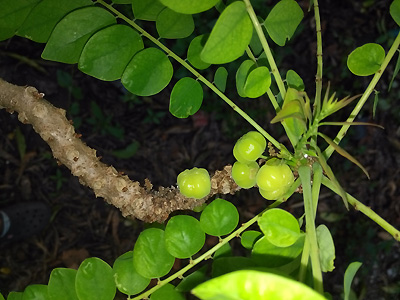
Gooseberry
Gooseberry (Phyllanthus emblica) - 150 gram, less than
half a cup, of gooseberries provides over 40 mg of
Vitamin C (a very important white blood cell boosting
antioxidant of course). The B vitamins are also present,
especially B5 and B6.
150 grams provides over 15 grams of carbohydrate, along
with the minerals potassium, copper, iron, phosphorus,
and manganese.
Gooseberries have antibacterial and anti-inflammatory
benefits. The leaves are used to treat fever as well as
being used as an antiseptic to clean wounds. They are
also considered effective and treating snakebites and
scorpion stings. The root bark is used to treat mouth
sores.
|
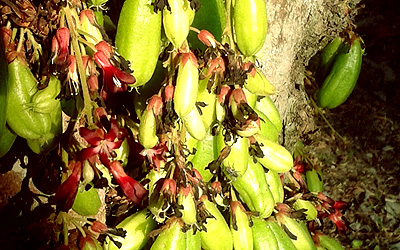
Bilimbi
Bilimbi fruits throughout the year. It is also known as
the Cucumber Tree or Tree Sorrel. It is supposed to have
a wide variety of medicinal properties such as
eliminating phlegm and reducing body heat.
It has anti-inflammatory properties too.
The fruit is 95% water, so it’s a nice find on a hot
day when you might not have had enough water.
It's in the family Oxalidaceae, therefore it has oxalic
acid, which interestingly is very useful for removing
rust.
|
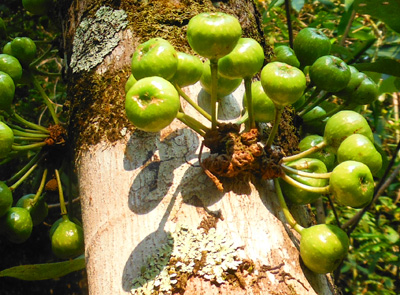
Ficus (Fig)
Besides having much needed carbohydrate value, figs are
rich in beta carotene, vitamin A, C, E and K, minerals
such as iron, calcium, copper, potassium, zinc,
phosphorus.
The amino acid Tryptophan is high in fig. Tryptophan
helps with sleep by triggering the body to release
serotonin.
Figs also have a Phenol called Benzaldehid that can
kill pathogens. Crushed fig can be used topically.
|
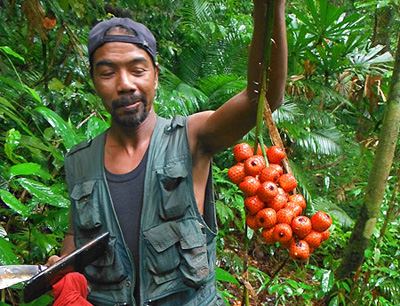
Vine fruit
Other than being in the palm family, I can’t find any
information on this lovely fruit. It has a very tough
skin and a big seed, but the little bit of fruit between
the two is absolutely stunning!
This is not really very common, though it seems common
in Phang Nga Province on certain mountains.
|

Ee-quee
This fruit taste like a Dream Sickle! It’s sweet, with
a slight tang to it. It must be very popular with wild
animals as most of the fruit that lands on the ground is
at least partially eaten. If I was an animal, I’d
certainly eat it.
|
Here is a bunch of information about wild
edible plants in Thailand.
Check out this video of edible plants in my
yard. Some are
available in the jungle.
There are, of course, many more edible and medicinal plants
in southern Thailand. Check out our blog and our FaceBook
jungle survival pages for a lot more information and wild
edible plant images.
|












